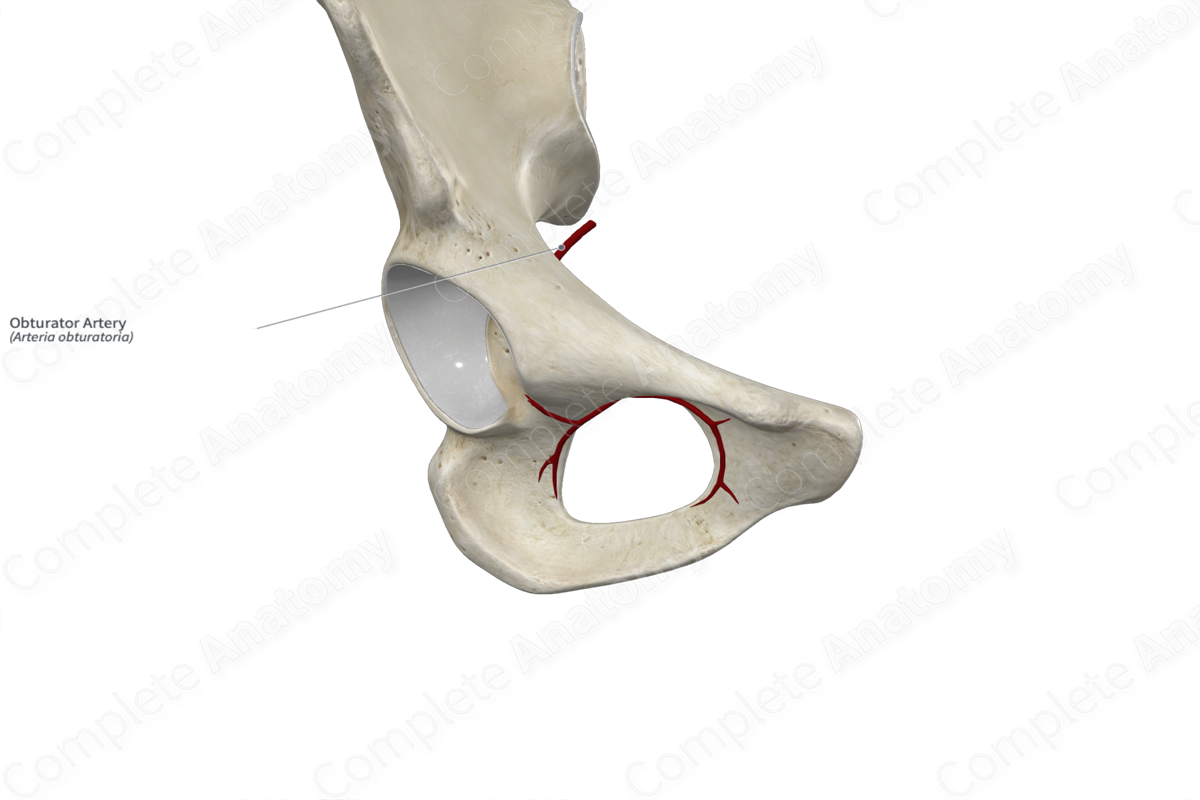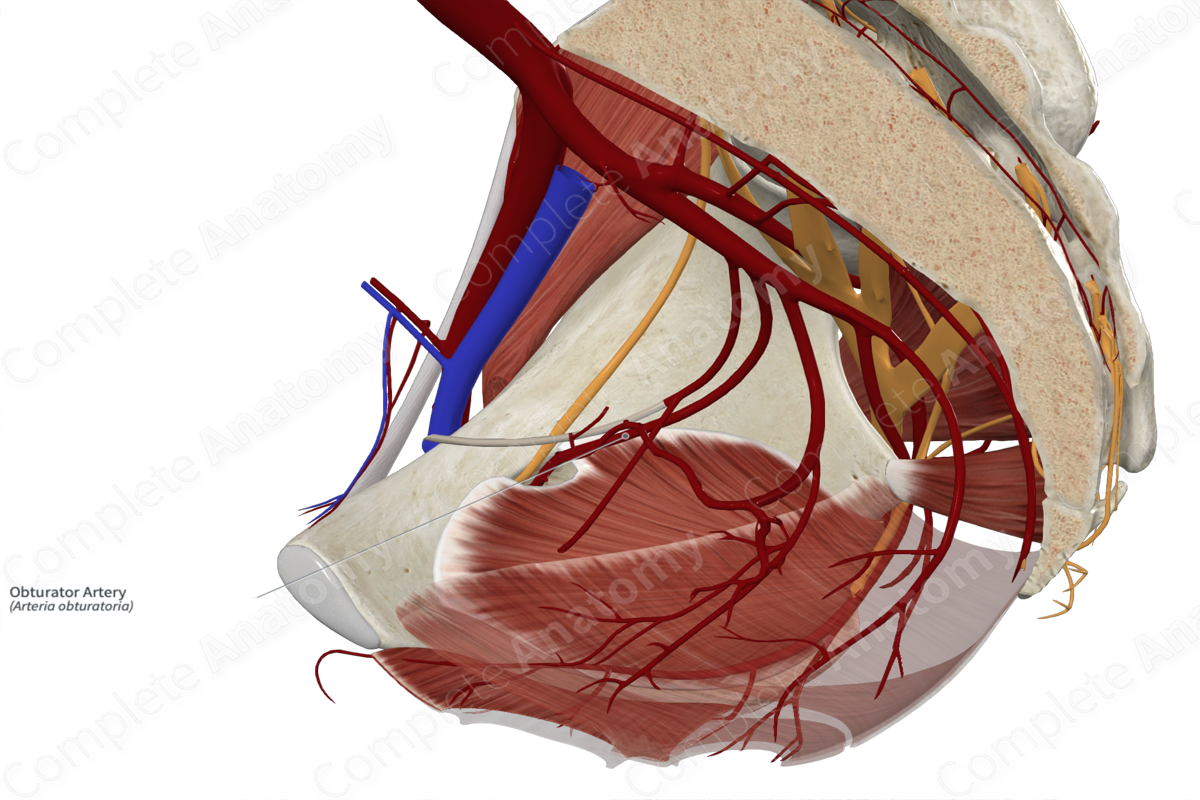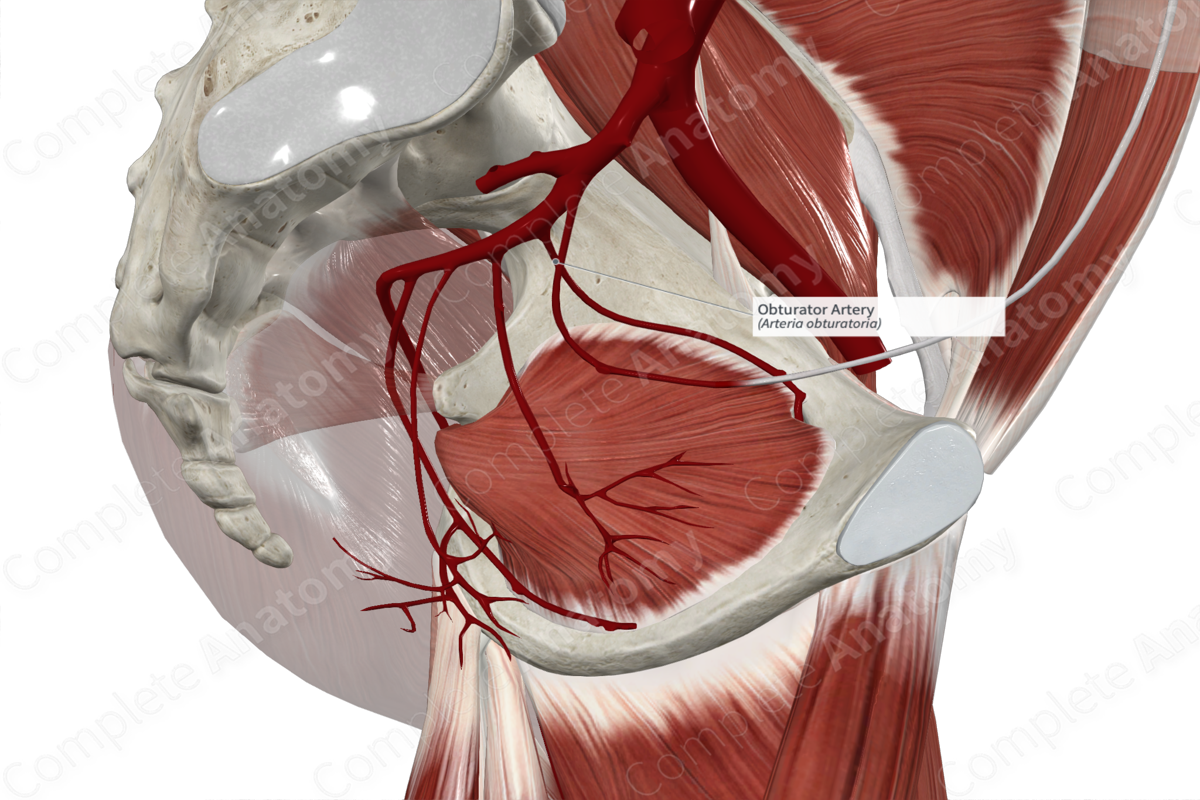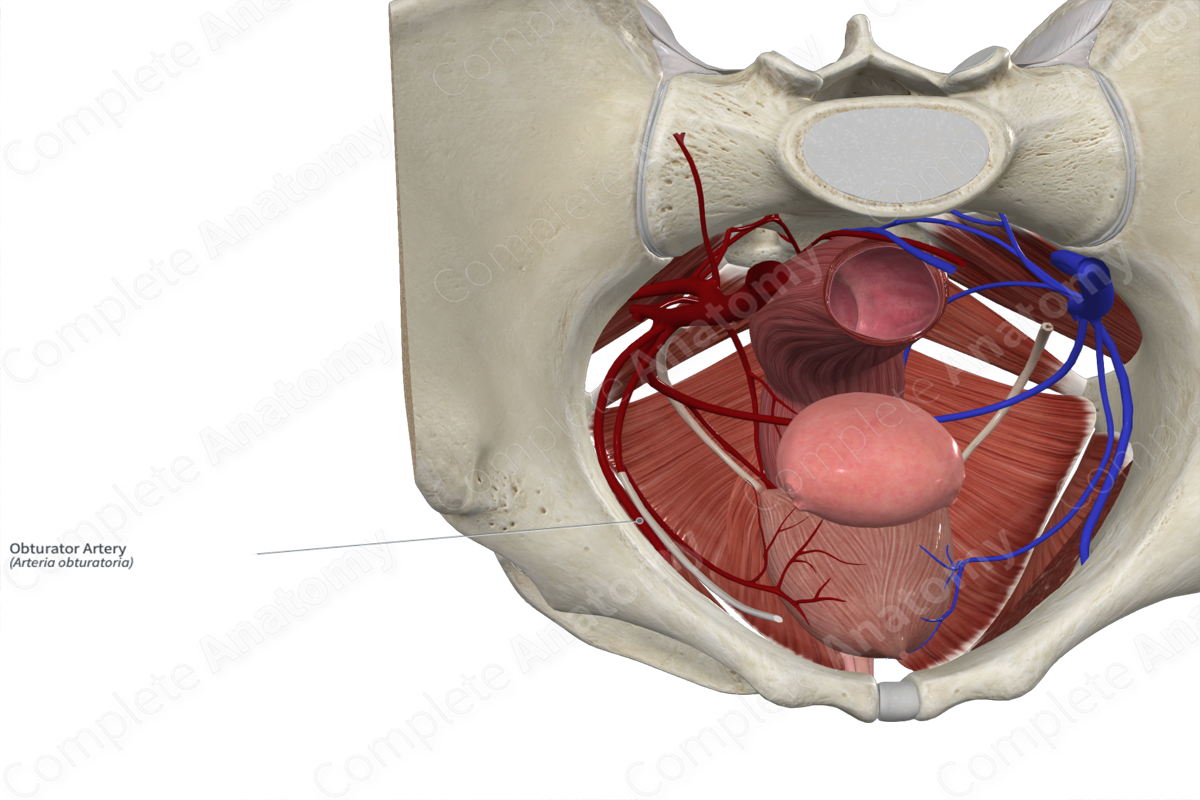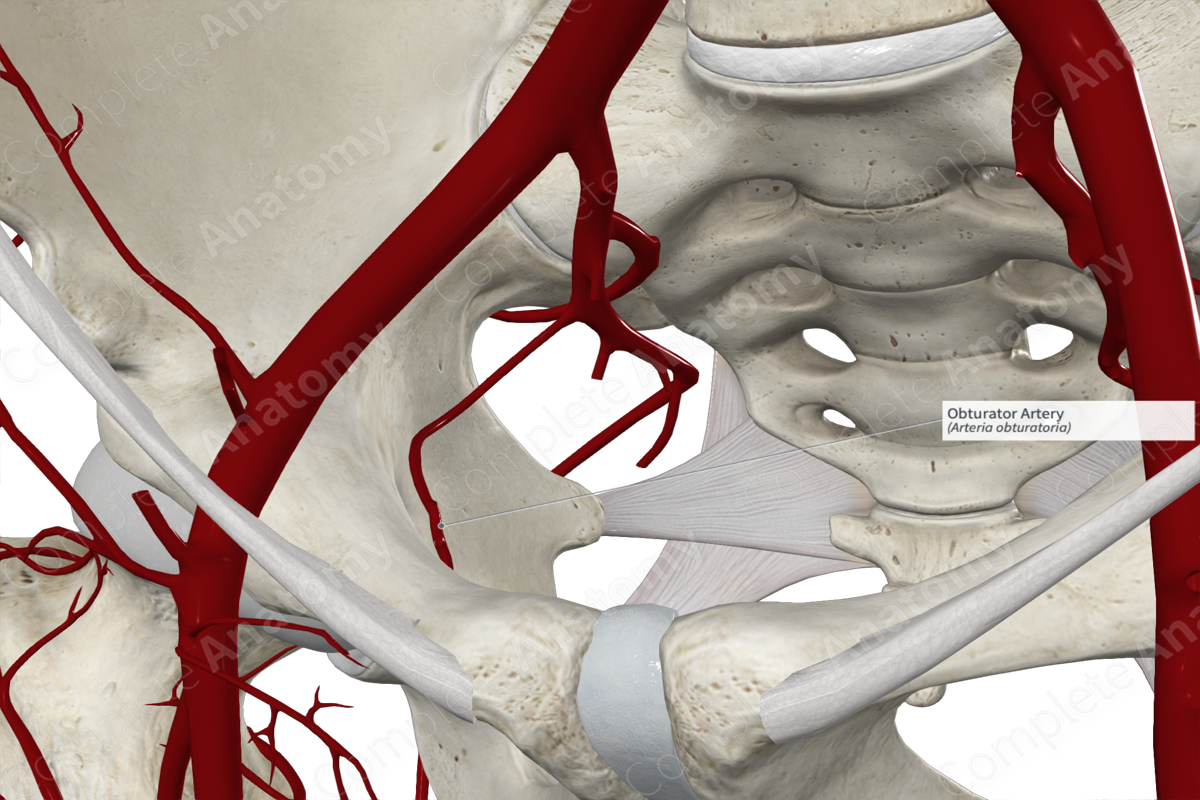
Quick Facts
Origin: Anterior division of internal iliac artery.
Course: Extends anteroinferiorly on the lateral pelvic wall to the obturator foramen.
Branches: Anterior, posterior, acetabular, and pubic branches, arterial corona mortis.
Supplied Structures: Muscles of the pelvis and adductors of thigh and head of femur.
Related parts of the anatomy
Origin
The obturator artery originates from the anterior division of the internal iliac artery. The obturator artery is highly variable, and its variations are clinically significant for abdominal and pelvic surgery. The accessory obturator artery may be described when the obturator artery arises from the inferior epigastric artery and not in the internal iliac artery (Dorland, 2011).
Course
The obturator artery extends anteroinferiorly from the anterior division of the internal iliac artery, on the lateral pelvic wall, lateral to the fascia of the obturator internus muscle. On its medial side, it is crossed by the ureter and by the vas deferens in males, or the ovary in females.
The artery is also accompanied by the obturator nerve and vein, which lie superior and inferior to the artery, respectively.
The obturator artery leaves the pelvis through the obturator canal.
Branches
In the pelvis, the obturator artery gives off a pubic branch that ascends on the pelvic surface of the ilium, forming anastomoses with the pubic branch from the opposite side and the pubic branch of the inferior epigastric artery.
When the obturator artery leaves the pelvis through the obturator canal, it divides into anterior and posterior branches between the obturator externus muscle and obturator membrane. The anterior branch curves around the medial border of the obturator foramen on the obturator membrane. The posterior branch passes posteriorly around the lateral border of the obturator foramen, on the obturator membrane, towards the ischial tuberosity. It gives off an acetabular branch that extends to the hip joint, entering the ligament of the head of the femur.
The corona mortis is an anatomical variation of the obturator artery, where it connects the obturator artery to the external iliac artery or the inferior epigastric artery.
Supplied Structures
The anterior branch of obturator artery supplies obturator internus and externus muscles and adductor muscles of the thigh, including adductor brevis, adductor magnus, and pectineus muscles. The posterior branch supplies muscles attaching to the ischial tuberosity including the semimembranosus, semitendinosus, and biceps femoris muscles. The acetabular branch supplies the hip joint.
References
Dorland, W. (2011) Dorland's Illustrated Medical Dictionary. 32nd edn. Philadelphia, USA: Elsevier Saunders.
Learn more about this topic from other Elsevier products
Artery

Arteries are vessels transporting blood between heart, tissues, and other organs in order to supply them with nutrition and oxygen.

